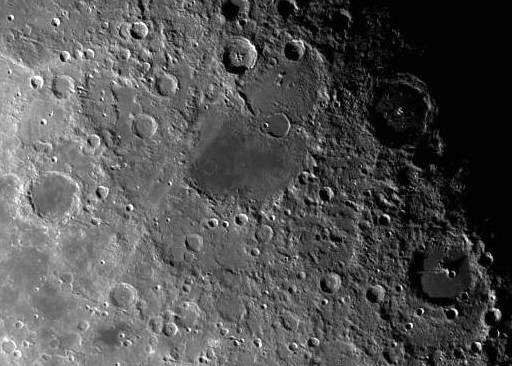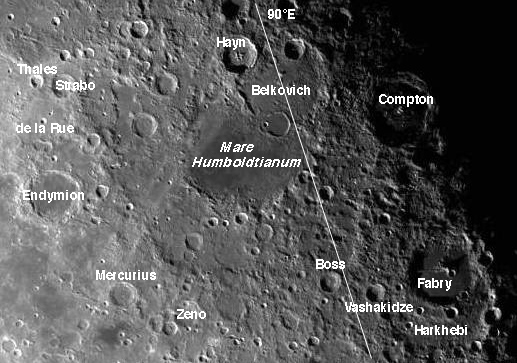February 28, 2015
Angular Basin
Originally published February 28, 2004
Image Credit: Galileo Earth-Moon Flyby |
|
Angular Basin Hugging the northeastern edge of the Moon is a patch of mare at the center of the two-ring Humboldtianum impact basin. When seen from Earth under high sun lighting the dark mare floor is the most visible feature, and is 4.2 km lower than the basin edges according to Clementine altimetry data. Lower lighting conditions reveal the 340 km wide rim around the mare and the 650 km diameter outer rim. Interestingly, the inner, mare-girding rim is circular, whereas the main outer basin rim is made up of three linear segments. Unfortunately, this outher rim is nearly non-existent to the north and northeast. Why is this outer rim so angular - and why are so many other crater rims polygonal rather than circular? Modern science rejects the old arguments by proponents of the idea that craters are volcanic, therefore straight rim segments would reflect straight faults that lava rose up. The most likely possibility is that when the Moon was very young it was much closer to the Earth and hence strong tidal forces generated a system of orthogonal stresses. As impact craters formed these stresses controlled the orientation of rims - hence polygonal walls. Certainly on Earth, we understand that Meteor Crater's polygonal walls mimic the regional stress field. But why is the inner Humboldtianum rim circular, while the outer rim is strongly angular? Both must have formed at the same time - although the inner rim may be more like an enlarged central peak formed by rebound, whereas the out rim may be more like a crater rim formed by collapse into the impact transient cavity. We still have a lot to learn about impact basin formation and the early history of the Moon. The entirety of Mare Humboldtianum is just barely on the nearside of the Moon, so favorable librations are necessary to see the area well. Librations of nearly 8 degrees for a few days around March 18th will provide a good opportunity to explore this area. Move the mouse over the image to see crater names. Technical Details: Related Links: Yesterday's LPOD: Structures of the Lunar Surface Tomorrow's LPOD: Marvelous Marius Rille |
|
Author & Editor: |
COMMENTS?
Register, Log in, and join in the comments.





